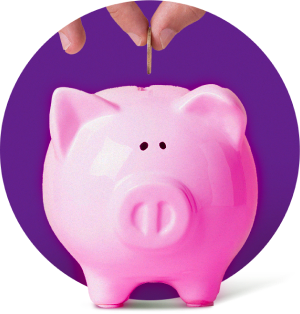EastWest income at ₱4.5 billion, ROE at 7.7%
Gotianun-led EastWest Bank (EW) posted a ₱4.5 billion net income for 2021 from the impact of lower loan levels, credit card rate cap and normalized trading gains.
“The pandemic hit profitability rather hard. From our 2017-2020 record of 4 consecutive years of being in the top 3 in return on equity (ROE), 2021’s 7.7% is now within the range of the industry’s average. We adopted a very measured lending stance that resulted to lower loan volumes. We believe we are largely done with the high loan loss provisions and now that the light at the end of this long pandemic tunnel is finally in sight, we are looking forward to making up for lost ground,” EW’s chief lending officer, Jackie Fernandez said.
Total revenues for the year declined by 19% to ₱27.0 billion, primarily due to lower net interest income (NII) and trading gains.
EastWest Bank maintained its industry leading net interest margin (NIM) at 6.6%. The Bank’s CASA ratio improved to 75% from 70% the previous year. This improvement in funding mix led to lower costs that tempered the drop in interest income. The Bank booked a lower NII of ₱21.0 billion for the year due to lower volumes of auto loans, mortgage, and personal loans compared to pre-pandemic levels. The slow recovery of consumer loans in the industry affected EW more because of its unique loan structure where more than 70% of its loans are in consumer loans.
“The good news is our balance sheet is much more resilient in terms of liquidity and capital adequacy. The challenge is, we need to scale up to leverage the Bank’s capabilities. We are hopeful that the pandemic and the Ukraine situation will clear up and we can resume work on the plan to double the balance sheet within the next five years.” Tony Moncupa, EW CEO said.
EW’s capital ratios improved to 15.6% and 14.5% for Capital Adequacy Ratio (CAR) and Common Equity Tier 1 (CET1) ratio, respectively, with the decline in risk assets and additional capital from earnings. This is well above regulatory minimums. The Bank expects to deploy its excess capital as it rebuilds its loan portfolio. EW targets a CET1 ratio of between 12% to 13%.
Trading gains started to normalize as interest rates remained steady for most of the year. Trading gains amounted to ₱1.9 billion, lower by 65% as interest rates steadied. In 2020, monetary authorities, particularly in the Philippines and the US, where EW primarily invest in fixed-income securities, adopted accommodative policies that pushed interest rates lower resulting to significantly higher trading gains for banks. The impact of low interest rates on trading gains were not as pronounced in 2021. Fees and commissions income, meanwhile, was flat at ₱3.7 billion as transactions levels continued to be below pre-pandemic levels.
Operating expenses on the other hand, grew marginally by 2% to ₱16.5 billion on the back of strategic investments on technology and digital offerings. With the anticipation of the recovery, the Bank preserved its workforce resulting to manpower expenses remaining steady from 2020 at ₱5.7 billion.
Provisions for loan losses were lower by 58% to ₱4.1 billion given the high provisioning done in 2020. “We believe that pandemic-induced elevated loan losses are largely accounted for and we expect lower loan loss provisions on the existing portfolio in 2022.” Fernandez added.







